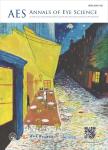*** mediated PEX1 gene augmentation improves visual function in a mouse model for Zellweger spectrum disorder
作者机构:Human GeneticsMcGill UniversityMontrealQCCanada Perelman School of MedicineUniversity of PennsylvaniaPhiladelphiaPAUSA OphthalomologyMcGill UniversityMontrealQCCanada School of OptometryUniversity of MontrealMontrealQCCanada
出 版 物:《Annals of Eye Science》 (眼科学年鉴(英文))
年 卷 期:2018年第1期
页 面:443-443页
学科分类:1002[医学-临床医学] 100214[医学-肿瘤学] 10[医学]
主 题:Retinal gene therapy peroxisome disorder Zellweger spectrum disorder(ZSD) PEX1
摘 要:Background:Zellweger spectrum disorder(ZSD)is an autosomal recessive disease caused by mutations in any one of 13 PEX genes whose protein products are required for peroxisome *** leading to blindness is one of the major handicaps faced by affected individuals,but treatment for this is supportive *** test whether we could improve visual function in ZSD,we performed a proof-of-concept trial for PEX1 gene augmentation therapy using the Pex1-G844D mouse model,which bears the equivalent to a common human *** model exhibits a gradual decline in scotopic ffERG response,an always residual photopic ffERG response,diminished visual acuity,and cone and bipolar cell ***:We administered subretinal injections of a PEX1-containing viral vector(***)to 2 mouse cohorts of 5 or 9 weeks of age.A GFP-containing vector was used as a control in the contralateral eye of each *** expression of the virus was confirmed by retinal histology/immunohistochemistry,and its ability to recover peroxisome import was confirmed in *** ffERG and optokinetic(OKN)analyses were performed on a subset of animals at 8,16,and 20 weeks after gene *** ffERG and OKN measures were performed when each cohort reached 32 weeks of age(23 or 27 weeks post injection).Results:Preliminary ffERG and OKN analyses at 8 weeks post injection showed mildly better retinal response and visual acuity,respectively,in the PEX1-injected eyes,as did ffERG analysis when each cohort reached 25 weeks of age(16 or 20 weeks after gene delivery).This effect was more pronounced in the cohort treated at 5 weeks of age,when ffERG response is highest in Pex1-G844D *** 32 weeks of age,the ffERG response in the PEX1-injected eyes was double that of GFP-injected eyes,on average,though there was no change in ***,in PEX1-injected eyes the photopic ffERG response improved over time,and the decline in scotopic b-wave amplitude was ameliorat



